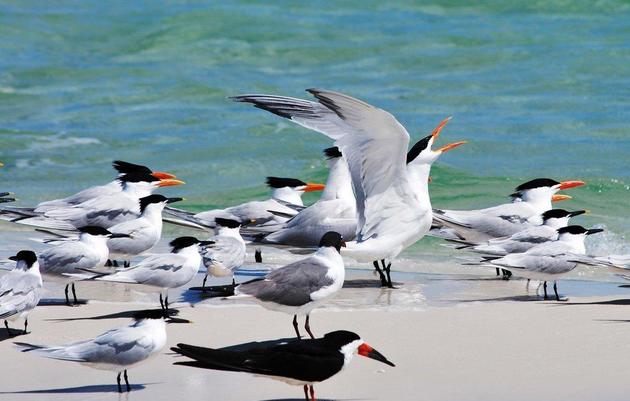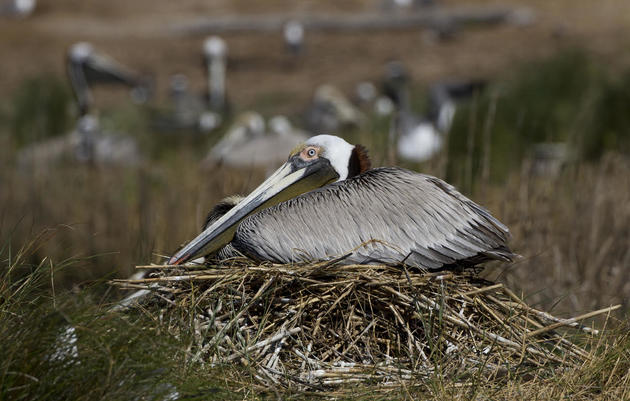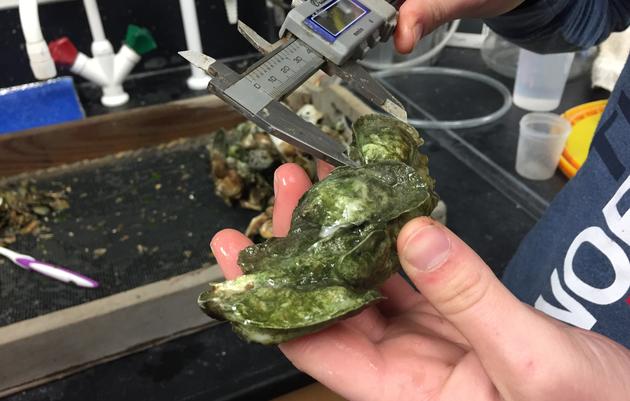The symbol of the National Audubon Society, Great Egrets were nearly wiped out by plume hunters in the United States during the turn of the last century. They made a comeback after early conservationists protected their colonies. Help us make sure Great Egrets are around for years to come!
Learn where to find them, how to help them, and more in this Priority Bird Profile: Great Egret.
Why does this bird matter to Audubon NC?
The Lower Cape Fear River hosts one of the largest concentrations of nesting waterbirds in the state, including about 20% of the state’s Great Egrets. Eight sanctuary islands in New Hanover and Brunswick Counties provide critical nesting sites for these birds—as well as terns, ibises, herons, pelicans and more. Audubon’s coastal team manages these sites with the goal of maintaining healthy nesting populations.
Where can people see this bird/when?
The Great Egret is one of the most easily-identifiable wading birds in North Carolina, distinguished by their large size (about three feet tall!), large yellow bill, and black legs. They mostly forage in shallow fresh water pools, ponds, mudflats and lake shores. They also feed in shallow, brackish water as well as salt water channels and pools.
SPRING & SUMMER
Great Egrets can mostly be found wading in wetlands but are also seen sporadically across the state mainly as a post-breeder in late summer and fall. Not only does it nest on coastal islands like those Audubon NC manages on the Lower Cape Fear River, but also in swamps in the interior Coastal Plain.
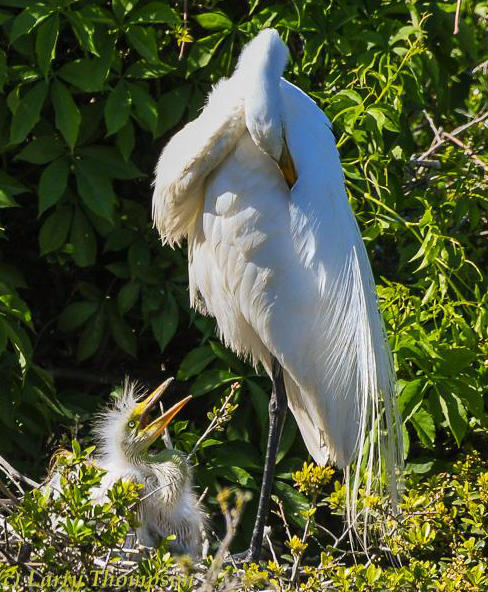
WINTER
Great Egrets are still commonly seen along the entire coast in the winter, but numbers will be reduced. It is rare to see Great Egrets in the Piedmont or mountainous area during the winter.
How is Audubon NC helping this bird?
With the support of organizations like The Orton Foundation and the Cape Fear Garden Club, Audubon NC manages eight sanctuary islands on the Lower Cape Fear River.
Audubon NC is also a partner for the Colonial Waterbird Census, which is coordinated by the NC Wildlife Resources Commission. This is a tri-annual statewide census which counts all nesting colonial waterbird species in order to track population trends and habitat use. In 2017, the count found 384 pairs of Great Egrets nesting on the Lower Cape Fear River!
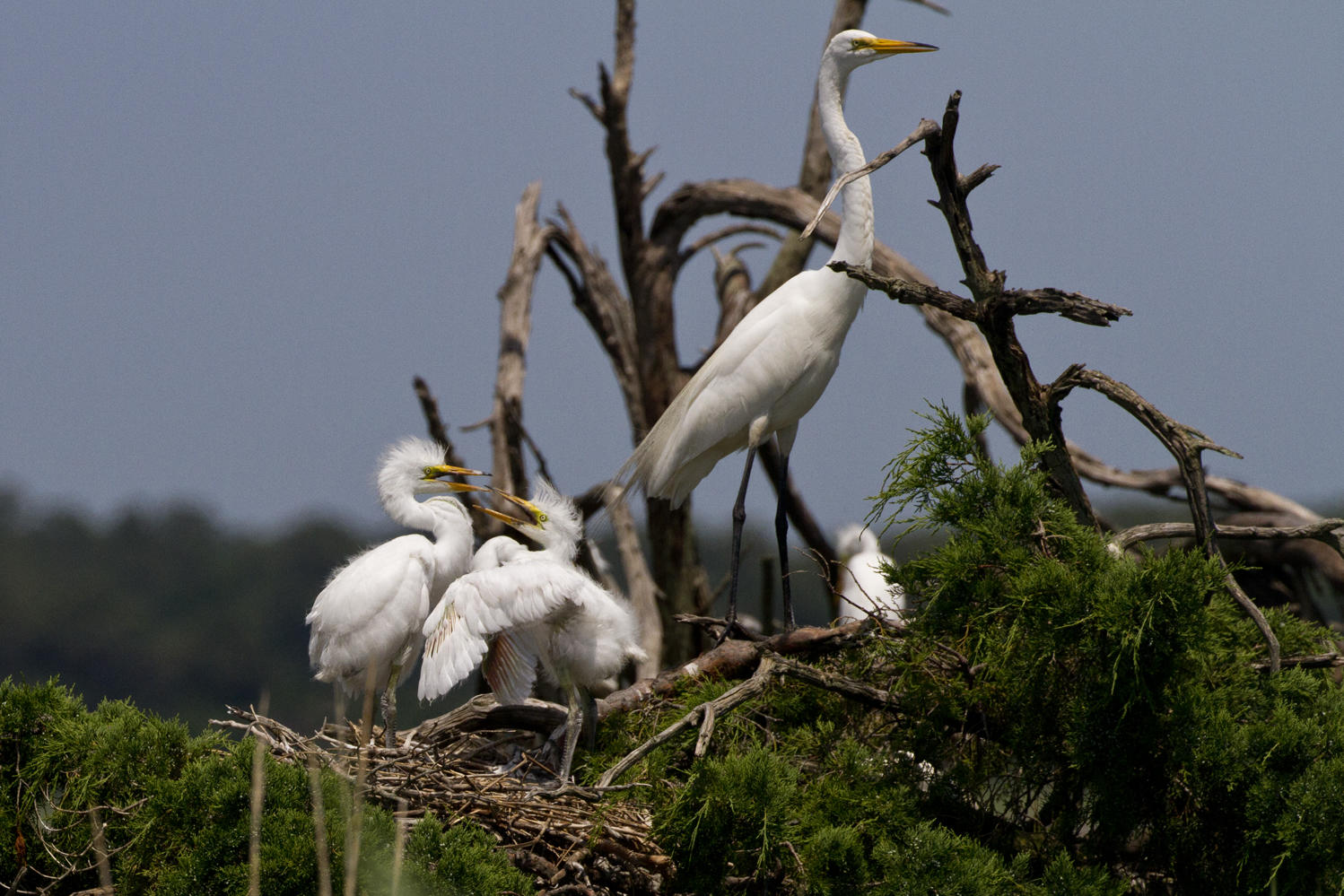
How can locals or beach visitors help this bird?
Coastal birds require clean, safe coastal habitats to migrate, nest and feed during critical points during the year, so it’s important that we are taking care of their homes. Birds can be very loyal to the places they visit during each phase of their life-cycle. The same bird can re-visit the same habitat each year for nesting, foraging, migration and wintering. Therefore, maintaining healthy ecosystems, free of pollutants, is vital to ensuring Great Egrets have plentiful food to eat and quality habitat to nest in every year.
Here are some easy ways you can help Great Egrets, as well as other coastal birds.
- Look out for signs marking nesting areas on islands and other coastal areas and obey all rules. In general, try to avoid areas where there are large congregations of birds—foraging birds often aren’t in posted areas, but need to be free from disturbance as well.
- Share what you know with other boaters and set a good example.
- Teach children about nesting season. Encouraging kids to learn about and watch out for birds is a great educational opportunity. Explain why they should not disturb bird families by running, playing, or flying a kite too close to nesting sites.
- Do not feed gulls. Feeding them can lead to an unnaturally higher number of gulls, who can prey on other birds’ young and eggs.
- Report incidents of nest destruction and disturbance to the North Carolina state wildlife agency.
- Pack out all your trash, including food, and discard fishing line properly. Birds can become entangled in the line and become injured.


